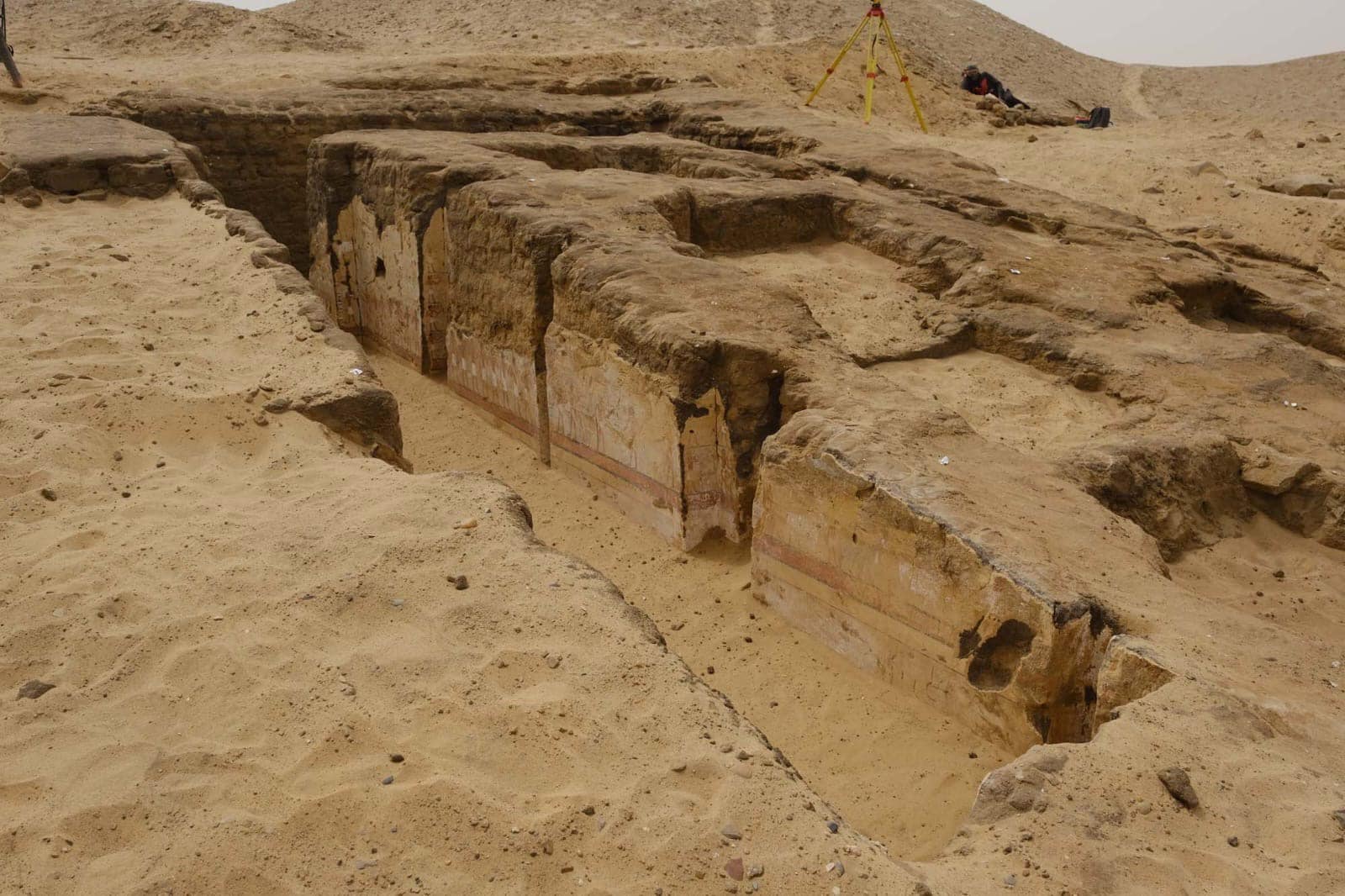
A joint mission between German and Egyptian archaeologists has uncovered a centuries-old mastaba during an excavation in Dahshur, close to the Great Pyramid of Giza.
Mastabas are a type of ancient Egyptian tomb characterized by their rectangular structure and inward sloping sides. Made of mudbrick or limestone, most of these flat-roofed tombs were built during the Old Kingdom period of Egyptian history. Also known as the “Age of the Pyramids,” this era, which stretches from 2700 to 2200 B.C.E., comprises the prosperous and pivotal reigns of pharaohs Sneferu, Khufu, and Menkaure, among others.
According to a press release from Egypt’s State Information Services, the newly discovered mastaba is part a larger Dahshur cemetery originally discovered in 2002 by archaeologists from the Free University of Berlin.
One of the inscriptions found on the tomb. Photo: Egypt Ministry of Tourism and Antiquities.
According to Stefan Seidlmayer of the German Archeological Institute, the mudbrick mastaba dates to roughly 2300 B.C.E., meaning it was constructed sometime between the end of Egypt’s Fifth Dynasty and the beginning of the Sixth Dynasty. Inscriptions on the tomb indicate that it was built for a person named “Sened-Neb-Af,” a member of the royal palace’s administration of tenants, and his wife “Idet,” a Priestess of Hathor. Hathor, also known as the “Lady of the Sycamore,” is an Egyptian goddess of the sky, femininity, fertility, and love whose worship began in the 3rd century B.C.E.
Other inscriptions on the tomb depict scenes from daily life, which is rare for mastabas from the period, according to the research team. These scenes include ships sailing down the Nile river, a market, and people threshing grain, the process of loosening the crop’s edible components, which in ancient Egypt was done with the help of sickles and oxen.
Another inscription on the tomb. Photo: Egypt Ministry of Tourism and Antiquities.
Excavations in the Dahshur area started in 1976 and initially focused on the pyramids of Sneferu (Old Kingdom) and Amenemhat III (Middle Kingdom). As the work on these monuments progressed, archaeologists gradually shifted their attention to the burial grounds of other powerful Egyptians, including administrators and priests like Sened-Neb-Af and his wife.
According to Egypt’s Ministry of Tourism and Antiquities, this latest discovery follows others by the joint mission, including the lower bridge and harbor of a curved pyramid, a ritual garden adjacent to the Valley Temple, as well as the burial grounds for palace servants during the reign of Ammhat II around 1880 B.C.E.
Seidlmayer stated that archaeologists will continue to look for more clues in the area. He also mentions that cleaning and documentation of the mastaba and its inscriptions will be carried out over the following weeks.